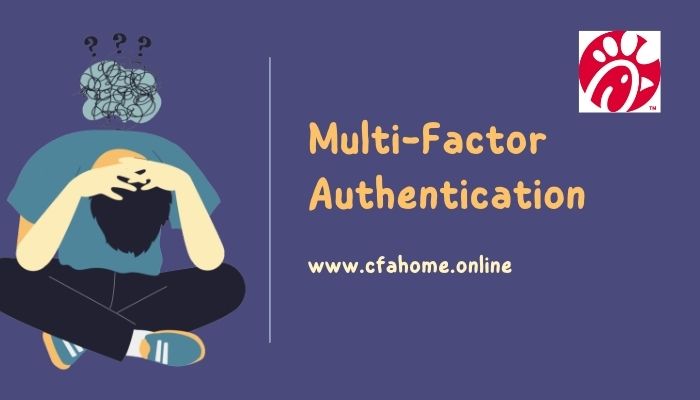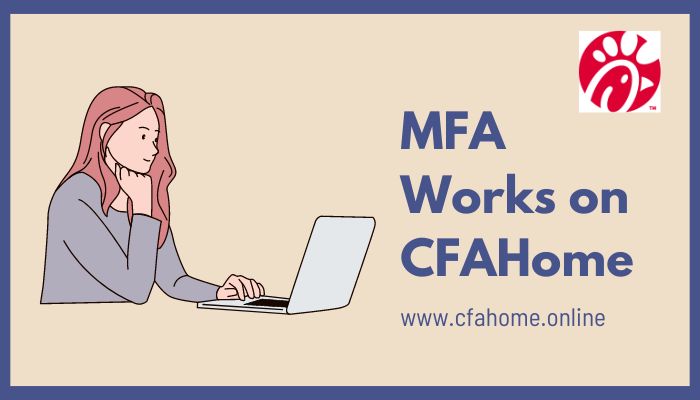In today’s digital landscape, securing our online accounts has become more crucial than ever. Chick-fil-A, recognizing this need, has implemented Multi-Factor Authentication (MFA) on CFAHome to enhance the security of its employees’ accounts. This article delves into the workings of MFA on CFAHome, its importance, and how it protects user accounts.
What is Multi-Factor Authentication?
Multi-Factor Authentication is a security process requiring users to provide two or more verification factors to access an account. This method significantly increases the security of your account by adding layers of protection beyond just a password.

The Three Types of Authentication Factors
- Something You Know: This is typically your password or a PIN.
- Something You Have: This could be a mobile device, smart card, or security token.
- Something You Are: This involves biometric verification like fingerprints or facial recognition.
How MFA Works on CFAHome
When you log into your CFAHome account, the MFA process typically follows these steps:
- Enter Your Username and Password: You start by entering your standard login credentials.
- Request for Additional Verification: Once your password is verified, the system prompts you for an additional form of verification.
- Provide Second Factor: Depending on the method set up, you might:
- Enter a code sent to your mobile device
- Approve a push notification on your smartphone
- Use a hardware token to generate a code
- Provide a biometric input like a fingerprint
- Access Granted: After successfully providing both factors, you gain access to your CFAHome account.
Types of MFA Used by CFAHome
CFAHome may use one or more of the following MFA methods:
- SMS Text Messages: A one-time code is sent to your registered mobile number.
- Authenticator Apps: Apps like Google Authenticator or Microsoft Authenticator generate time-based one-time passwords.
- Push Notifications: A notification is sent to your smartphone, which you can approve or deny.
- Hardware Tokens: Physical devices that generate one-time codes.
- Biometrics: Fingerprint or facial recognition, typically used on mobile devices.

Benefits of MFA on CFAHome
- Enhanced Security: Even if your password is compromised, an attacker can’t access your account without the second factor.
- Regulatory Compliance: Many industries require MFA for accessing sensitive information.
- Flexibility: Users can often choose their preferred second factor method.
- Reduced Fraud: MFA significantly reduces the risk of unauthorized access and potential fraud.
Best Practices for Using MFA on CFAHome
- Keep Your Second Factor Secure: Don’t share your MFA codes or devices with anyone.
- Update Your Contact Information: Ensure your phone number and email are up-to-date for receiving codes.
- Use Strong, Unique Passwords: MFA doesn’t replace the need for a strong password.
- Be Cautious of Phishing: Legitimate services will never ask for your MFA code via email or phone.
Conclusion
Multi-Factor Authentication on CFAHome adds a crucial layer of security to protect employee accounts and sensitive information. By understanding how MFA works and following best practices, Chick-fil-A employees can significantly enhance their digital security, ensuring that their accounts remain protected in an increasingly complex cyber landscape.
Remember, while MFA greatly improves security, it’s just one part of a comprehensive cybersecurity strategy. Stay vigilant, keep your software updated, and always be cautious about the information you share online.
